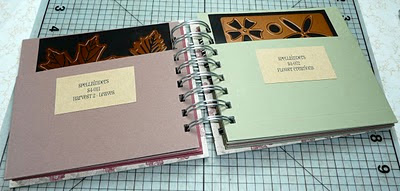The background of the tag was made using the same technique I used earlier this month. Let me show you how I made the tag - I'm not Tim Holtz, but his tags have been inspiring me!
First, I stamped the bird on the tag with a permanent black ink.
Next, I stamped the bird on a piece of scrap paper, cut it out, and taped it to the tag with a removable adhesive. I stamped a music background stamp with versamark, and embossed the music background with clear embossing powder. By masking the bird, the music background won't cover up the bird. (Mask not shown in this picture, but all of the supplies are here.)
After embossing, I used a holly mask, foam applicators, and distress inks to ink the holly around the tag. Here are the supplies:
And here is what the tag looks like after using the mask:
To add a bit more depth to the edges, I inked the edges using distress ink, and a foam applicator.
After peeling the mask off, the bird is revealed!
I colored the stamped image with prismacolor pencils. I love these pencils, and have been using them since I was about 10. After coloring the image in, I use mineral spirits (low odour thinner as pictured), and a paper stump to blend the colors in. I learned about this technique from Michele of Purple Onion Designs (her background stamp is used on this tag) on the Two Peas in a Bucket message board. Here is what the image looks like after coloring:
And here is what is looks like after blending the colored pencil, and adding some bling - crystals to the bottom, and distress stickles to the holly berries. I like how this technique makes intense colors. It's bolder than a watercolored image, but not quite as intense as using a marker.
To finish the card off, I stamped a border stamp on the green matting paper, and used the same vintage photo ink and ink applicator around the edges. I used some tinsel from Stampin' Up! to create a line across the border, and stamped a greeting. Let's see it again:
Image sources:
- Music background from Purple Onion Designs
- Merry Christmas from Holiday Best set from Stampin' Up! (not currently available)
- Bar code background, holly mask from Club Scrap (not currently available)
If you celebrate Christmas, I hope it's a great one. If you don't, I hope you enjoy a peaceful end to the year. Whatever holiday you celebrate, I hope you enjoy using this technique on your cards. I love embossing and resist techniques to create depth in cards.







































